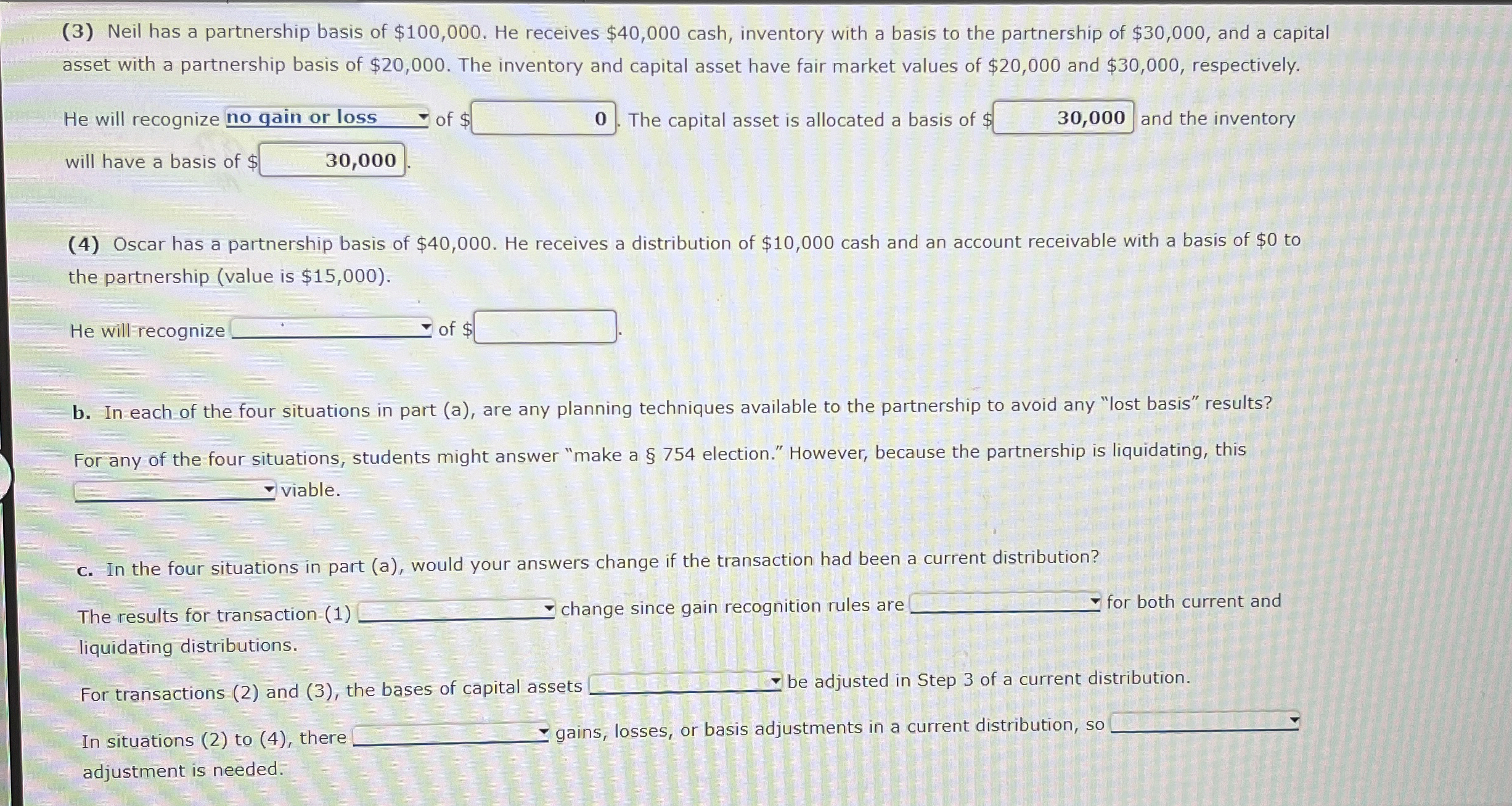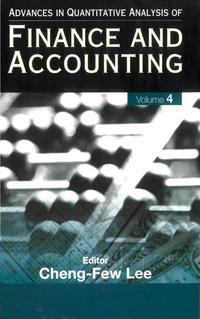Answered step by step
Verified Expert Solution
Question
1 Approved Answer
( 3 ) Neil has a partnership basis of $ 1 0 0 , 0 0 0 . He receives $ 4 0 , 0
Neil has a partnership basis of $ He receives $ cash, inventory with a basis to the partnership of $ and a capital asset with a partnership basis of $ The inventory and capital asset have fair market values of $ and $ respectively.
He will recognize no gain or loss of $ The capital asset is allocated a basis of $ and the inventory will have a basis of $
Oscar has a partnership basis of $ He receives a distribution of $ cash and an account receivable with a basis of $ to the partnership value is $
He will recognize of $
b In each of the four situations in part a are any planning techniques available to the partnership to avoid any "lost basis" results?
For any of the four situations, students might answer "make a election." However, because the partnership is liquidating, this
viable.
c In the four situations in part a would your answers change if the transaction had been a current distribution?
The results for transaction change since gain recognition rules are for both current and liquidating distributions.
For transactions and the bases of capital assets be adjusted in Step of a current distribution.
In situations to there gains, losses, or basis adjustments in a current distribution, so adjustment is needed.

Step by Step Solution
There are 3 Steps involved in it
Step: 1

Get Instant Access to Expert-Tailored Solutions
See step-by-step solutions with expert insights and AI powered tools for academic success
Step: 2

Step: 3

Ace Your Homework with AI
Get the answers you need in no time with our AI-driven, step-by-step assistance
Get Started


